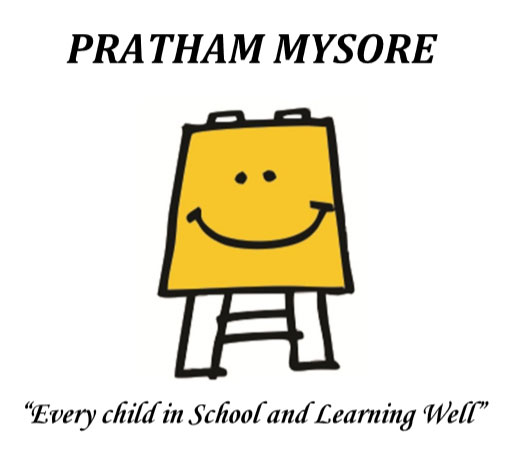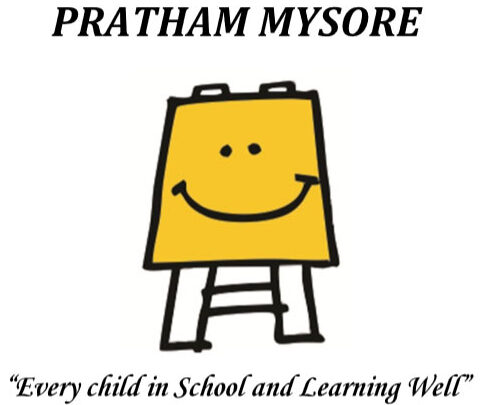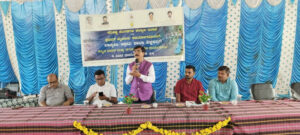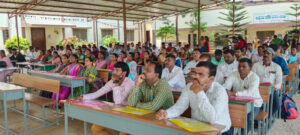Pratham Mysore and Scheduled Tribes Welfare Department (STWD) Partnership Program
Scheduled Tribes Welfare Department (STWD), Government of Karnataka, working towards the upliftment of Scheduled Castes and Scheduled Tribes especially for their socio-economic and educational advancement.
Pratham Mysore andScheduled Tribes Welfare Department (STWD) have agreed to work together in Partnership to improve learning outcomes in VALMIKI ASHRAMA SCHOOLS for a period of 3 years targeting children primary to upper primary grades using Pratham Mysore intervention models adopting its methodology, content, and pedagogy. This partnership program has been implemented through the following two interventions:
- Kannada Vachana Karyakrama (KVK) for Grades 1 to 7
- Nagu Nagutha Ganitha (NNG) for Grades 1-7
The learning Improvement program is a combination of activities helps children engage and learn. For example, reading aloud, participating in discussions on what they have read or heard, activities with phonetic charts, playing a variety of word games, expressing their own views orally and on paper – are all part of the process of learning to read. We also do activities with children in large groups, small groups, and individually. The overall approach is such that it can go on the scale. Materials used are of low cost and teaching-learning methods including assessment are easy to do so that they can be used widely. In addition to instructional activities in school, there are also activities that parents or families can do with their children at home.
Kannada Vachana Karyakrama (Literacy Improvement Program) is a remedial program for correcting literacy gaps designed to help children who are lagging behind academically. With a little extra help and encouragement, these children can make substantial progress in language skills within 2 months or less. It is intended to reduce the risk of dropping out of school. This package is effectively used for building the Kannada language skills. This remedial reading package is intended to correct the graded difficulty at four levels namely Saralakshara, Gunithakshara, Sajathi Otthakshara, Vijathi Otthakshara. It also takes care of pronunciation difficulties.
Nagu NaguthaGanitha (Numeracy Improvement Program):
Studies reveal that there is a gap between school textbook content and actual learning in classrooms. Particularly in a subject like mathematics which most children find difficult, resulting in poor learning outcomes. As a step towards bridging this gap and making Math easy, Pratham Mysore has introduced the Nagu Nagutha Ganitha (NNG) – Fun with Math program along with the assistance of the State School System. This is a package developed by Dr. T. Padmini, Trustee of Pratham Mysore, for fostering and improving basic arithmetic and mathematical skills among primary school goers and special groups of children with visual and hearing impairment. The NNG model is implemented with a creative kit having a collection of a number of materials promoting a child’s mental ability in developing skills in numeracy.
Using the TaRL Approach and the TLM we will be able to achieve the following goals:
- Enable children to read basic text fluently (at least with text up to Grade II level of difficulty) with comprehension
- To recognize numbers and perform basic operations. Ensure that children can express themselves and write simple sentences on their own
- Introducing and sustaining innovative teaching-learning practices in schools. Providing monitoring and mentoring support to teachers
- Building the capacity of Government Monitoring cadre CRPs & BRPs to train and monitor the progress in schools
Teachers Training and Implementation: The teachers of Asrama Shale will be trained by Pratham Mysore team on different activities in Kannada and Math program using appropriate teaching and learning materials. Regular refresher training and meetings will form an integral part to discuss progress in class and challenges, interpretation of assessment data and ensuing instructional strategies in class will also form part of the implementation plan.
Tracking and Assessment: To gauge the learning levels of children, baseline, midline, and end-line assessments will be carried out in every school with all the children covered in two interventions. This will help in understanding their current learning levels and tracking their progress over time. The analysis of the assessment data will be shared in review meetings with government officials at block and district levels.
Activities and Materials: Children will be taught using methods and materials that are appropriate for them. The key activities will be outlined in a teaching manual that will be shared with the teachers. A kit of basic materials will be provided; some materials will be for use by the schoolteachers for the entire group of children and some materials for use by the children themselves.



